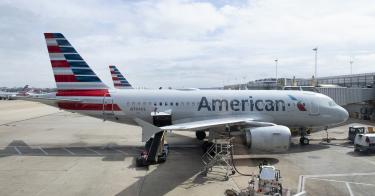Only in Washington would it make sense to “help” an industry and its consumers by imposing a new regulation.
The House of Representatives’ coronavirus relief bill would have imposed new requirements for each airline to reduce its climate footprint if the airline received financial assistance through the package signed into law by the president last week.
Specifically, any company receiving aid under House Democrats’ Take Responsibility for Workers and Families Act would have had to go carbon-neutral for domestic flights by 2025 and reduce greenhouse gas emissions 50% below 2005 levels by 2050.
Not only is such a proposal incredibly ill-timed, climate regulations on the airline industry would be costly for consumers without having any measurable impact on the climate.
Airline emissions account for about 3% of total domestic greenhouse gas emissions. In 2018, the aviation industry produced 2.4% of total carbon dioxide emissions for the entire planet.
Climatically, the effects of the greenhouse gas regulations on the aviation industry would be negligible.
Using the same climate model and climate sensitivities employed by the Environmental Protection Agency and the Intergovernmental Panel on Climate Change, my colleague and senior statistician Kevin Dayaratna projects that eliminating all carbon dioxide emissions from the U.S. aviation industry by 2030 would avert 0.002 of a degree Celsius of warming by 2050 and 0.0051 of a degree Celsius of warming by 2100.
The regulations, however, would force airlines to retool their planes, switch to costlier fuels, or replace older planes sooner than anticipated. Airlines would have to pass the cost of compliance onto passengers in the form of higher ticket prices, baggage fees, and other charges airlines apply that frustrate consumers.
Importantly, airlines already have an incentive to be more efficient, which will reduce operating costs and reduce emissions.
Fuel is a major expense for the aviation industry, so there’s a financial motivation to make planes more fuel-efficient or invest in alternative fuels. For instance, companies have used lighter paper for in-flight magazines, lighter materials for bathroom seats, and lighter cutlery, all to reduce weight and improve efficiency.
In fact, Northwest Airlines (now part of Delta Air Lines) saved $500,000 per year by cutting limes for drinks into 16 slices rather than 10, thereby reducing the number of limes needed on flights.
According to the International Air Transport Association, fuel-efficiency improved 10% across the industry in 2018, compared with 2010. The industry also achieved record efficiency by filling nearly 82% of seats in 2018, which improves per-capita emissions calculations.
On the other hand, a regulation that mandates emissions reductions would come at a cost to Americans. Not only would families pay higher prices from the climate mandate, but they could also pay more as taxpayers in the form of additional subsidies for the airlines.
In advocating for the same 50% reduction from 2005 levels as suggested in House Speaker Nancy Pelosi’s bill, International Air Transport Association CEO Alexandre de Juniac remarked, “This ambitious climate-action goal needs government support.”
To be clear, the taxpayer already supports these initiatives. The U.S. Department of Energy’s Bioenergy Technologies Office funds different projects to commercialize advanced biofuels for the aviation industry.
Moreover, the Air Force bought 11,000 gallons of alcohol-to-jet fuel at $59 per gallon for a total of $649,000. The equivalent cost for 11,000 gallons in diesel costs at $3.60 per gallon would be $39,600.
Oil prices are even lower now, making conventional fuels even more of a bargain. (Some airlines are locked into higher prices because they hedge against price volatility.)
Nevertheless, stringent climate regulations also likely would result in calls to expand these programs and introduce unnecessary government intervention in the form of grants, targeted tax credits, and loan guarantees.
Congress was wise to leave the climate regulations for the airline industry out of the coronavirus relief packages signed into law thus far. Future proposals should do the same.
This piece originally appeared in The Daily Signal




